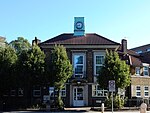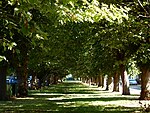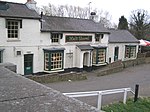Frays River
Colne catchmentRivers of BuckinghamshireRivers of LondonUse British English from September 2017

Frays River is a semi-canalised short river in England that branches off the River Colne at Uxbridge Moor and rejoins it at West Drayton. It is believed to be a mainly man-made anabranch north of the confluence with the River Pinn to feed watermills in the Parish of Hillingdon. The river is believed to be named after John Fray who owned Cowley Hall in the fifteenth century. Other names for the river are the Uxbridge and Cowley Mill Stream, the Cowley Stream or the Colham Mill Stream. Two of the three mills in Hillingdon Parish recorded in the Domesday book are believed to have been located on the southern section of the river.
Excerpt from the Wikipedia article Frays River (License: CC BY-SA 3.0, Authors, Images).Frays River
Trout Road, London Yiewsley (London Borough of Hillingdon)
Geographical coordinates (GPS) Address Nearby Places Show on map
Geographical coordinates (GPS)
| Latitude | Longitude |
|---|---|
| N 51.515277777778 ° | E -0.48166666666667 ° |
Address
Trout Road
UB7 7GL London, Yiewsley (London Borough of Hillingdon)
England, United Kingdom
Open on Google Maps









